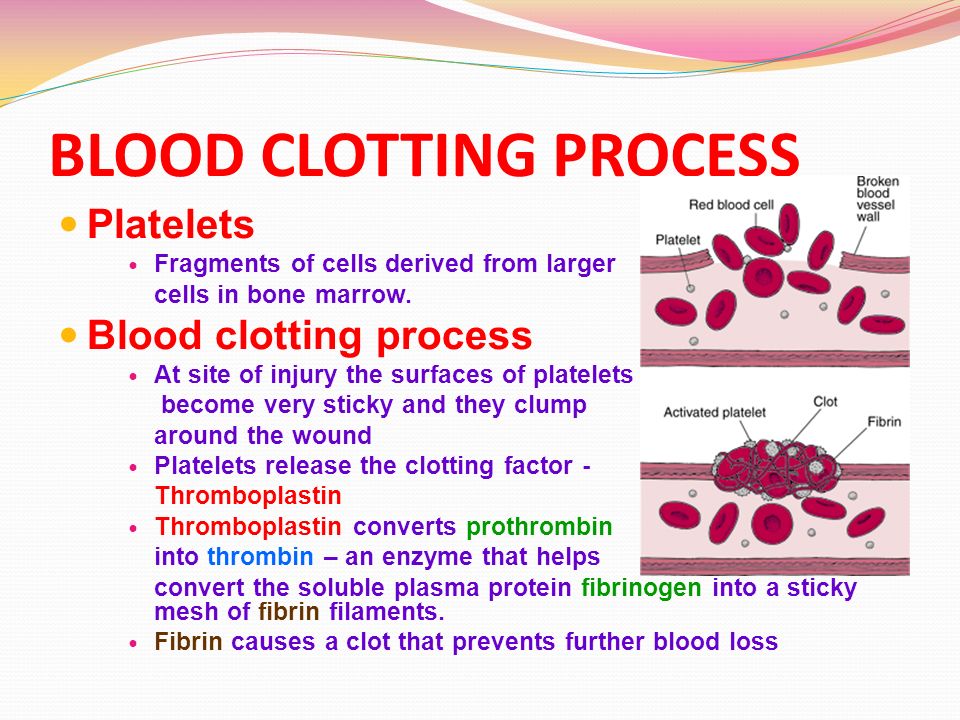Blood infection means. Sepsis: Understanding Blood Infections, Symptoms, and Lifesaving Treatments
What are the early warning signs of sepsis. How does sepsis affect the body. What are the most effective treatments for sepsis. Who is at highest risk for developing sepsis. How can you prevent sepsis in everyday life.
The Silent Killer: Unraveling the Complexities of Sepsis
Sepsis, often referred to as blood poisoning or septicemia, is a life-threatening condition that occurs when the body’s response to infection spirals out of control. This medical emergency affects millions of people worldwide each year, with potentially devastating consequences if left untreated. Understanding sepsis is crucial for early detection and prompt intervention.
What exactly happens during sepsis? When the body detects an infection, the immune system normally releases chemicals to fight it off. In sepsis, this response becomes overactive, triggering widespread inflammation throughout the body. This can lead to a cascade of events, including:
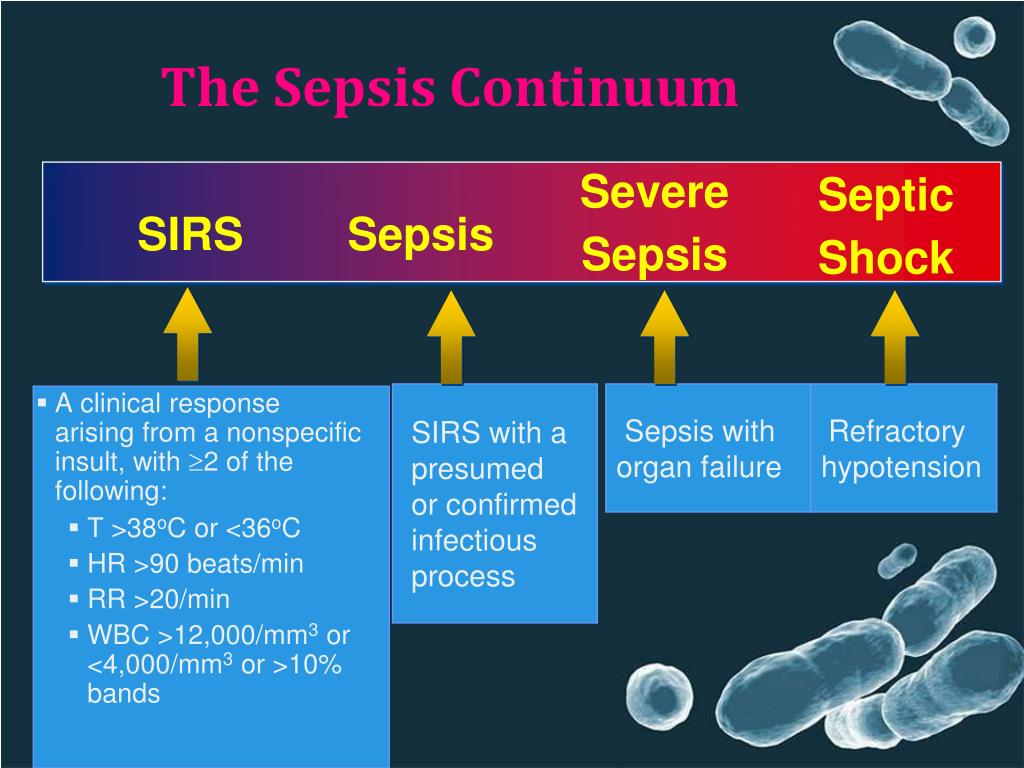
- Organ damage
- Blood clots
- Reduced blood flow to limbs and vital organs
- Dangerously low blood pressure (septic shock)
While any infection can potentially lead to sepsis, bacterial infections are the most common culprits. However, viral, fungal, and parasitic infections can also trigger this life-threatening condition.
Recognizing the Red Flags: Sepsis Symptoms and Warning Signs
Early recognition of sepsis is critical for improving outcomes. However, the symptoms can be subtle and easily mistaken for other conditions. What are the key signs to watch for?
- Rapid breathing and heart rate
- Confusion or disorientation
- Fever and chills (or sometimes a very low body temperature)
- Decreased urine output
- Nausea and vomiting
- Extreme fatigue or weakness
- Skin discoloration or blotchiness
- Clammy or sweaty skin
- Severe pain or discomfort
It’s important to note that sepsis symptoms can vary depending on the underlying infection and the individual. Some people may experience only a few of these symptoms, while others may have additional signs not listed here.
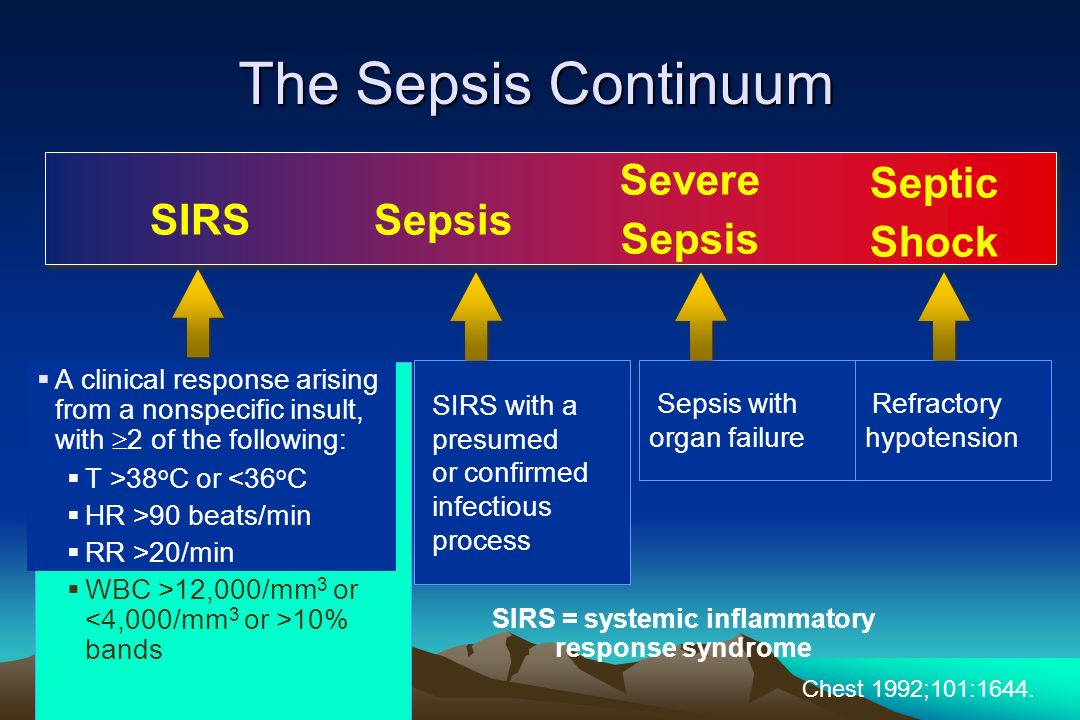
The Sepsis Time Window: Why Every Minute Counts
How quickly does sepsis progress? The condition can develop rapidly, sometimes within hours of an infection taking hold. This narrow window for intervention underscores the importance of seeking immediate medical attention if sepsis is suspected. Prompt treatment can mean the difference between life and death.
Vulnerable Populations: Who’s at Highest Risk for Sepsis?
While sepsis can affect anyone, certain groups are more susceptible to developing this life-threatening condition. Who should be especially vigilant?
- Individuals with weakened immune systems (e.g., HIV/AIDS patients, cancer patients undergoing chemotherapy)
- Pregnant women
- Infants and young children
- Elderly individuals, particularly those with other health conditions
- People who have recently been hospitalized or undergone major surgery
- Individuals using catheters or breathing tubes
- Diabetics
- Those with serious medical conditions (e.g., appendicitis, pneumonia, meningitis, cirrhosis, urinary tract infections)
Understanding these risk factors can help healthcare providers and individuals remain vigilant and take appropriate preventive measures.

Diagnosing the Invisible Enemy: Medical Detective Work
How do doctors diagnose sepsis? The process often involves a combination of physical examination, laboratory tests, and imaging studies. What specific diagnostic tools do healthcare providers use?
- Blood tests to detect bacteria or other pathogens
- White blood cell count analysis
- Platelet count assessment
- Blood pressure monitoring
- Acid-base balance evaluation
- Blood oxygen level measurement
- Coagulation studies
- Electrolyte panel
- Kidney and liver function tests
- Imaging studies (X-rays, CT scans, ultrasounds) to identify sources of infection
These diagnostic tools help doctors not only confirm the presence of sepsis but also determine its severity and guide treatment decisions.
The Sepsis Severity Scale: From Early Stages to Septic Shock
How do healthcare providers classify sepsis severity? The condition is typically categorized into three stages:
- Sepsis: Infection present with some signs of systemic inflammation
- Severe sepsis: Organ dysfunction begins to occur
- Septic shock: Dangerously low blood pressure that doesn’t respond to fluid replacement
Understanding this progression helps medical teams tailor their interventions and monitor patient response to treatment.

Battling Sepsis: A Multi-Pronged Treatment Approach
What does sepsis treatment entail? The management of this life-threatening condition requires a comprehensive and aggressive approach. Key components of sepsis treatment include:
- Admission to the Intensive Care Unit (ICU) for close monitoring
- Intravenous (IV) fluids to support blood pressure and organ function
- Oxygen therapy to ensure adequate tissue oxygenation
- Broad-spectrum antibiotics to combat bacterial infections
- Vasopressors to improve blood pressure in cases of septic shock
- Corticosteroids to reduce inflammation
- Insulin for blood sugar control
- Mechanical ventilation if respiratory failure occurs
- Kidney dialysis in cases of renal failure
- Surgery to remove sources of infection (e.g., abscesses, infected tissues)
The specific treatment plan will depend on the individual patient’s condition, the underlying cause of sepsis, and the severity of organ dysfunction.
The Golden Hour: Time-Sensitive Sepsis Interventions
Why is rapid intervention so crucial in sepsis treatment? Medical professionals often refer to the “golden hour” in sepsis care – the critical time window where aggressive treatment can significantly improve outcomes. During this period, the focus is on:

- Rapid administration of antibiotics
- Fluid resuscitation to support blood pressure
- Identifying and controlling the source of infection
Studies have shown that for every hour delay in antibiotic administration, the risk of mortality increases significantly.
The Aftermath: Long-Term Consequences and Sepsis Survivors
What are the potential long-term effects of sepsis? Even after successful treatment, many sepsis survivors face ongoing health challenges. These may include:
- Chronic fatigue and weakness
- Cognitive impairment (sometimes called “post-sepsis syndrome”)
- Increased risk of recurrent infections
- Organ damage (e.g., kidney failure, lung damage)
- Amputations due to tissue damage
- Psychological effects (e.g., anxiety, depression, PTSD)
The road to recovery for sepsis survivors can be long and challenging, often requiring ongoing medical care and rehabilitation.
Life After Sepsis: Supporting Survivors and Families
How can we better support sepsis survivors? Recognizing the unique challenges faced by those who have battled sepsis is crucial. Support strategies may include:

- Comprehensive follow-up care
- Physical therapy and rehabilitation programs
- Cognitive rehabilitation for those experiencing “brain fog”
- Mental health support and counseling
- Support groups for survivors and their families
- Education about potential long-term effects and coping strategies
By addressing both the physical and emotional needs of sepsis survivors, we can improve their quality of life and help them regain a sense of normalcy.
Sepsis Prevention: Empowering Individuals and Communities
How can we reduce the incidence of sepsis? While it’s not always possible to prevent sepsis entirely, there are several strategies that can significantly reduce the risk:
- Practicing good hand hygiene (washing hands thoroughly and frequently)
- Staying up-to-date with vaccinations
- Managing chronic health conditions effectively
- Promptly cleaning and caring for wounds, even minor ones
- Seeking medical attention for infections that worsen or don’t improve
- Being aware of sepsis symptoms, especially if you’re in a high-risk group
Healthcare facilities also play a crucial role in sepsis prevention through measures such as:

- Implementing strict infection control protocols
- Educating staff on early sepsis recognition
- Using sepsis screening tools
- Adhering to best practices for catheter and central line care
The Power of Education: Raising Sepsis Awareness
Why is public awareness of sepsis so important? Many people are unfamiliar with sepsis or may not recognize its symptoms. Increasing public knowledge about this condition can lead to:
- Earlier recognition of sepsis symptoms
- Prompt seeking of medical care
- Better understanding of prevention strategies
- Increased support for sepsis research and treatment initiatives
Educational campaigns, community outreach programs, and healthcare provider training can all contribute to improving sepsis outcomes on a broader scale.
Innovations in Sepsis Care: Emerging Treatments and Research Frontiers
What new approaches are being developed to combat sepsis? The field of sepsis research is dynamic, with ongoing efforts to improve diagnosis, treatment, and outcomes. Some promising areas of investigation include:

- Biomarker-based diagnostic tools for earlier sepsis detection
- Personalized treatment approaches based on genetic profiles
- Immunomodulatory therapies to regulate the body’s response to infection
- Novel antibiotic delivery systems to combat drug-resistant pathogens
- Artificial intelligence algorithms for predicting sepsis risk and progression
- Extracorporeal therapies to remove inflammatory mediators from the blood
These innovative approaches hold the potential to revolutionize sepsis care and improve survival rates in the future.
The Role of Big Data in Sepsis Management
How is technology transforming sepsis care? The integration of big data analytics and machine learning in healthcare settings is opening new avenues for sepsis management:
- Early warning systems that analyze multiple patient parameters to predict sepsis risk
- Decision support tools to guide treatment choices
- Population health management strategies to identify high-risk individuals
- Real-time monitoring systems for continuous patient assessment
These technological advancements are enhancing our ability to detect and respond to sepsis quickly and effectively.
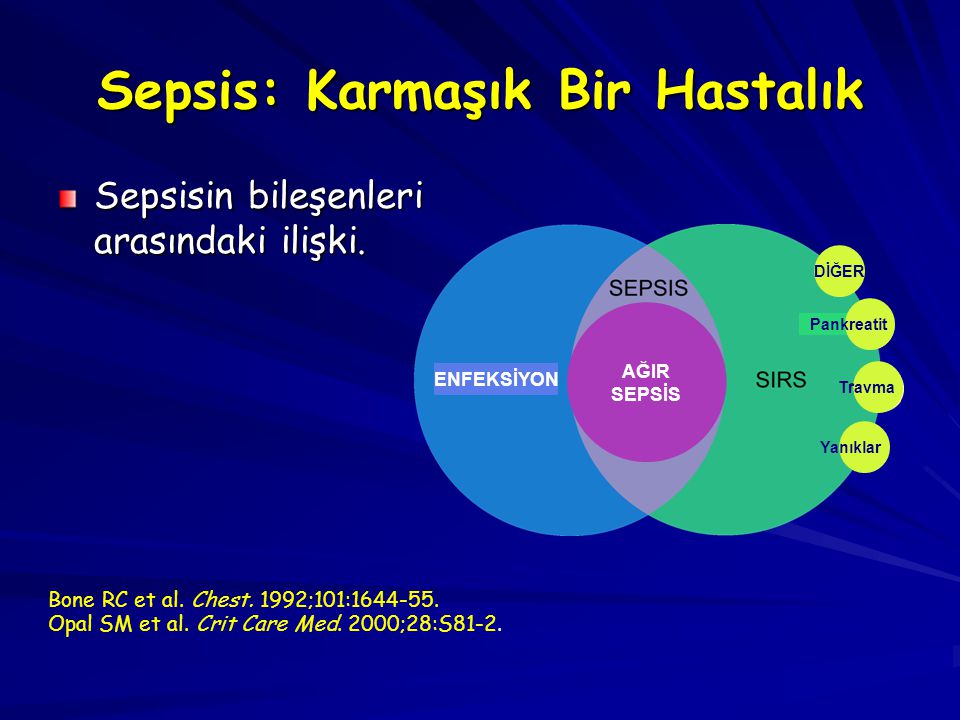
Global Perspectives: Sepsis as a Worldwide Health Challenge
How does sepsis impact different regions of the world? While sepsis is a global health issue, its prevalence and outcomes can vary significantly between countries and healthcare systems. Some key considerations include:
- Disparities in access to healthcare and advanced medical technologies
- Variations in antibiotic resistance patterns across regions
- Differences in public awareness and healthcare provider education
- Economic impacts of sepsis on healthcare systems and communities
Addressing these global challenges requires international collaboration, resource sharing, and a commitment to improving healthcare infrastructure in underserved areas.
Sepsis in Low- and Middle-Income Countries: Unique Challenges and Solutions
What specific issues do developing nations face in combating sepsis? Some of the key challenges include:
- Limited access to diagnostic tools and advanced medical care
- Higher prevalence of infectious diseases
- Lack of resources for sepsis education and prevention programs
- Shortages of trained healthcare professionals
Addressing these challenges may require innovative, resource-appropriate solutions such as:
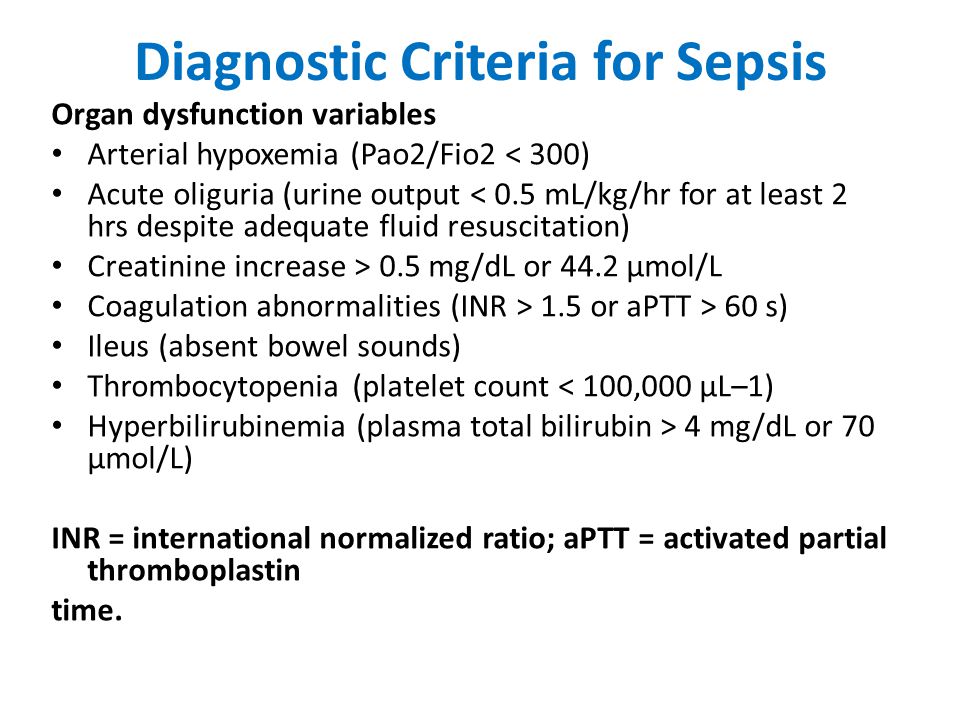
- Developing low-cost diagnostic tools
- Implementing community-based sepsis awareness programs
- Leveraging mobile health technologies for remote monitoring and support
- Strengthening primary healthcare systems to improve infection prevention and control
By focusing on these areas, we can work towards reducing the global burden of sepsis and improving outcomes for patients worldwide.
Sepsis (Blood Infection): Symptoms, Causes & Treatments
Written by Mary Anne Dunkin
- What Is Sepsis?
- Sepsis Causes and Risk Factors
- Sepsis Symptoms
- Sepsis Diagnosis
- Sepsis Treatment
- Sepsis Complications
- Sepsis Prevention
- More
Sepsis is when your body has an unusually severe response to an infection. It’s sometimes called septicemia.
During sepsis, your immune system, which defends you from germs, releases a lot of chemicals into your blood. This triggers widespread inflammation that can lead to organ damage. Clots reduce blood flow to your limbs and internal organs, so they don’t get the nutrients and oxygen they need.
In severe cases, sepsis causes a dangerous drop in blood pressure. Doctors call this “septic shock.” It can quickly lead to organ failure, such as your lungs, kidneys, and liver. This can be deadly.
Bacterial infections are most often to blame for sepsis. But it can also happen because of other infections. It can begin anywhere bacteria, parasites, fungi, or viruses enter your body, even something as small as a hangnail.
But it can also happen because of other infections. It can begin anywhere bacteria, parasites, fungi, or viruses enter your body, even something as small as a hangnail.
An infection of the bone, called osteomyelitis, could lead to sepsis. In people who are hospitalized, bacteria may enter through IV lines, surgical wounds, urinary catheters, and bed sores.
Sepsis is more common in people who:
- Have weakened immune systems because of conditions like HIV or cancer or because they take drugs such as steroids or those that prevent rejection of transplanted organs
- Are pregnant
- Are very young
- Are elderly, especially if they have other health problems
- Were recently hospitalized or had major surgeries
- Use catheters or breathing tubes
- Have diabetes
- Have a serious medical condition such as appendicitis, pneumonia, meningitis, cirrhosis, or a urinary tract infection
Because it can begin in different parts of your body, sepsis can have many different symptoms.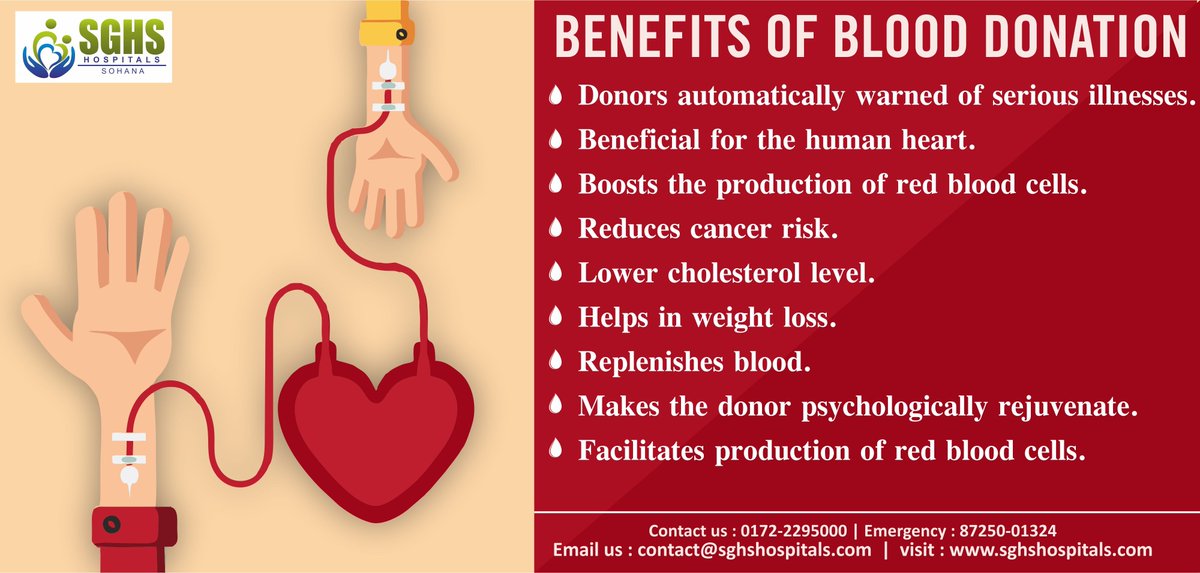 The first signs may include rapid breathing and confusion. Other common symptoms include:
The first signs may include rapid breathing and confusion. Other common symptoms include:
- Fever and chills
- Very low body temperature
- Peeing less than usual
- Fast heartbeat
- Nausea and vomiting
- Diarrhea
- Fatigue or weakness
- Blotchy or discolored skin
- Sweating or clammy skin
- Severe pain
Your doctor will do a physical exam and run tests to look for things like:
- Bacteria in your blood or other body fluids
- Signs of infection on an X-ray, CT scan, or ultrasound
- A high or low white blood cell count
- A low number of platelets in your blood
- Low blood pressure
- Too much acid in your blood (acidosis)
- A lack of oxygen in your blood
- Problems with how your blood clots
- Uneven levels of electrolytes
- Kidney or liver problems
Your doctor will probably keep you in the hospital’s intensive care unit (ICU). Your medical team will try to stop the infection, keep your organs working, and manage your blood pressure.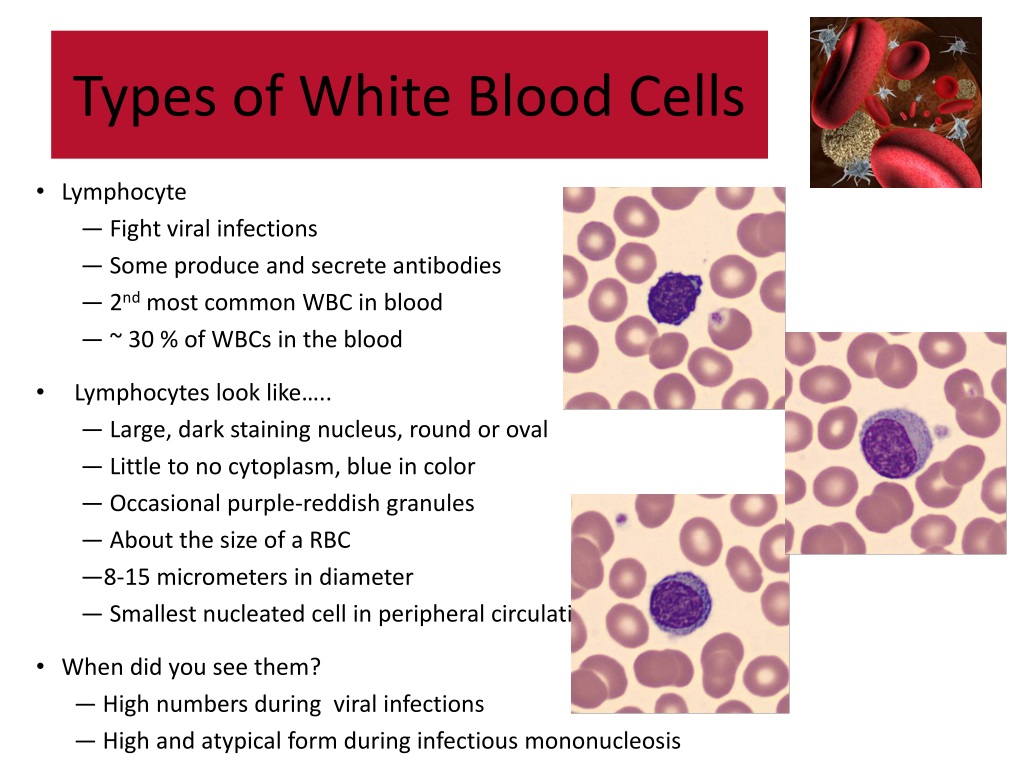 IV fluids and extra oxygen can help with this.
IV fluids and extra oxygen can help with this.
Broad-spectrum antibiotics may fight infections caused by bacteria early on. Once your doctor knows what’s causing your sepsis, they can give you medicine that targets that specific germ. Often, doctors prescribe vasopressors (which make your blood vessels narrow) to improve blood pressure. You could also get corticosteroids to fight inflammation or insulin to keep control of your blood sugar.
If your case is severe, you might need other types of treatment, like a breathing machine or kidney dialysis. Or you may need surgery to drain or clean out an infection.
As sepsis gets worse, it causes more problems throughout your body. These may include:
- Kidney failure
- Dead tissue (gangrene) on fingers and toes, leading to amputation
- Lung, brain, or heart damage
- A higher risk of infections over time
Sepsis can be deadly in between 25% and 40% of cases.
Preventing infection is the best way to prevent sepsis.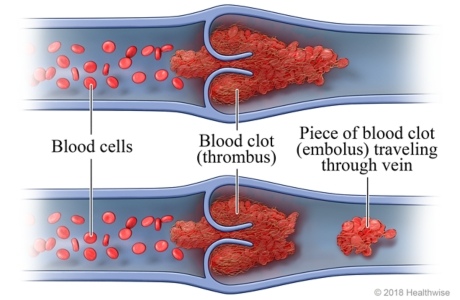 Take these steps:
Take these steps:
- Wash your hands often with soap and water for at least 20 seconds each time.
- Keep up with recommended vaccines for things like flu and chickenpox.
- Keep control of any chronic health conditions.
- If you have an injury that’s broken your skin, clean it as soon as possible. Keep it clean and covered as it heals, and watch for signs of infection.
- Treat any infections. Get medical care right away if they don’t get better or if they seem like they’re getting worse.
Top Picks
Sepsis (Blood Infection): Symptoms, Causes & Treatments
Written by Mary Anne Dunkin
- What Is Sepsis?
- Sepsis Causes and Risk Factors
- Sepsis Symptoms
- Sepsis Diagnosis
- Sepsis Treatment
- Sepsis Complications
- Sepsis Prevention
- More
Sepsis is when your body has an unusually severe response to an infection. It’s sometimes called septicemia.
It’s sometimes called septicemia.
During sepsis, your immune system, which defends you from germs, releases a lot of chemicals into your blood. This triggers widespread inflammation that can lead to organ damage. Clots reduce blood flow to your limbs and internal organs, so they don’t get the nutrients and oxygen they need.
In severe cases, sepsis causes a dangerous drop in blood pressure. Doctors call this “septic shock.” It can quickly lead to organ failure, such as your lungs, kidneys, and liver. This can be deadly.
Bacterial infections are most often to blame for sepsis. But it can also happen because of other infections. It can begin anywhere bacteria, parasites, fungi, or viruses enter your body, even something as small as a hangnail.
An infection of the bone, called osteomyelitis, could lead to sepsis. In people who are hospitalized, bacteria may enter through IV lines, surgical wounds, urinary catheters, and bed sores.
Sepsis is more common in people who:
- Have weakened immune systems because of conditions like HIV or cancer or because they take drugs such as steroids or those that prevent rejection of transplanted organs
- Are pregnant
- Are very young
- Are elderly, especially if they have other health problems
- Were recently hospitalized or had major surgeries
- Use catheters or breathing tubes
- Have diabetes
- Have a serious medical condition such as appendicitis, pneumonia, meningitis, cirrhosis, or a urinary tract infection
Because it can begin in different parts of your body, sepsis can have many different symptoms. The first signs may include rapid breathing and confusion. Other common symptoms include:
The first signs may include rapid breathing and confusion. Other common symptoms include:
- Fever and chills
- Very low body temperature
- Peeing less than usual
- Fast heartbeat
- Nausea and vomiting
- Diarrhea
- Fatigue or weakness
- Blotchy or discolored skin
- Sweating or clammy skin
- Severe pain
Your doctor will do a physical exam and run tests to look for things like:
- Bacteria in your blood or other body fluids
- Signs of infection on an X-ray, CT scan, or ultrasound
- A high or low white blood cell count
- A low number of platelets in your blood
- Low blood pressure
- Too much acid in your blood (acidosis)
- A lack of oxygen in your blood
- Problems with how your blood clots
- Uneven levels of electrolytes
- Kidney or liver problems
Your doctor will probably keep you in the hospital’s intensive care unit (ICU). Your medical team will try to stop the infection, keep your organs working, and manage your blood pressure. IV fluids and extra oxygen can help with this.
IV fluids and extra oxygen can help with this.
Broad-spectrum antibiotics may fight infections caused by bacteria early on. Once your doctor knows what’s causing your sepsis, they can give you medicine that targets that specific germ. Often, doctors prescribe vasopressors (which make your blood vessels narrow) to improve blood pressure. You could also get corticosteroids to fight inflammation or insulin to keep control of your blood sugar.
If your case is severe, you might need other types of treatment, like a breathing machine or kidney dialysis. Or you may need surgery to drain or clean out an infection.
As sepsis gets worse, it causes more problems throughout your body. These may include:
- Kidney failure
- Dead tissue (gangrene) on fingers and toes, leading to amputation
- Lung, brain, or heart damage
- A higher risk of infections over time
Sepsis can be deadly in between 25% and 40% of cases.
Preventing infection is the best way to prevent sepsis. Take these steps:
Take these steps:
- Wash your hands often with soap and water for at least 20 seconds each time.
- Keep up with recommended vaccines for things like flu and chickenpox.
- Keep control of any chronic health conditions.
- If you have an injury that’s broken your skin, clean it as soon as possible. Keep it clean and covered as it heals, and watch for signs of infection.
- Treat any infections. Get medical care right away if they don’t get better or if they seem like they’re getting worse.
Top Picks
Microbial ‘filters’: is there a market for new blood ‘purification’ methods?
The market for extracorporeal detoxification for sepsis could be worth several billion dollars a year. How is it that in an era of ever new advances in medicine, banal blood poisoning continues to claim so many lives?
How is it that in an era of ever new advances in medicine, banal blood poisoning continues to claim so many lives?
Are infections defeated?
In January of this year, US media reported that a 70-year-old woman died in Nevada from septic shock caused by a “superbug” resistant to 26 antibiotics at once. An article about this case spread across the news feeds, giving the impression of an unprecedented event. Septic shock, the final stage of sepsis, plays the role of a static decoration in such messages: if it were possible to find a suitable antibiotic, the tragedy would not have happened, the conclusion suggests itself.
Unfortunately, this description of the situation is far from reality. Sepsis (a systemic inflammatory response to infection, not in individual organs, but throughout the body), caused by the most common pathogens, continues to claim many lives. According to the authors of the article “Economic aspects of severe sepsis”, the direct costs of treating each patient alone in the United States amount to $ 20,000-30,000. Indirect costs associated with disability further increase this figure by 70-80%. The number of annually diagnosed cases in the United States exceeds 1 million, and this figure continues to grow. How is it that in an era of ever-increasing medical advances, sepsis continues to claim so many lives?
According to the authors of the article “Economic aspects of severe sepsis”, the direct costs of treating each patient alone in the United States amount to $ 20,000-30,000. Indirect costs associated with disability further increase this figure by 70-80%. The number of annually diagnosed cases in the United States exceeds 1 million, and this figure continues to grow. How is it that in an era of ever-increasing medical advances, sepsis continues to claim so many lives?
The dizzying pace of development of chemistry and biology in the 20th century ensured the creation of hundreds and thousands of effective drugs for a variety of diseases. From the outside, it may seem that creating a cure for any disease is just a matter of time. It seems that the need for therapeutic solutions of a different type has disappeared these days. Is it so?
The intensive development of the pharmaceutical industry has required the formation of a set of strict rules for evaluating the effectiveness and safety of drugs. The classical way of drug registration includes preclinical studies, and then several stages of clinical trials. The probability of failure increases at each next stage, the cost of an error increases with each step. “Stumble at the finish line” is more expensive and more offensive than at the beginning of the journey.
The classical way of drug registration includes preclinical studies, and then several stages of clinical trials. The probability of failure increases at each next stage, the cost of an error increases with each step. “Stumble at the finish line” is more expensive and more offensive than at the beginning of the journey.
The statistics from 2006 to 2016 in the USA is as follows: the probability of successful completion of a series of clinical trials is only 9.2%. At the same time, for different groups of diseases, the numbers differ significantly. “Anti-record” for drugs for the treatment of oncological, psychiatric and neurological diseases: a discouraging 5-6% reach the finish line. “Record holders” – drugs for the treatment of infectious diseases with a probability of successful completion of clinical trials – 19.1%. Estimating the total costs of developing new drugs is not easy, the process takes many years and involves the work of many specialists. But for ready-made solutions, drugs with proven effectiveness, pharmaceutical giants are ready to shell out billions of dollars in cash (such is the story, for example, Cubist Pharmaceuticals)
But for ready-made solutions, drugs with proven effectiveness, pharmaceutical giants are ready to shell out billions of dollars in cash (such is the story, for example, Cubist Pharmaceuticals)
What is the reason for such a low probability of successful development of a new drug?
Molecular targets
The creators of new drugs determine the targets that will be affected by a particular molecule. Cells “communicate” with each other, producing hundreds of different substances per second and releasing these factors into the intercellular space. This is something like letters sealed in a bottle that other recipient cells can receive in order to send a response in the same way. In this complex process, failures are inevitable, and then diseases arise. The more violations, the more “firmly stands” the disease, the more difficult it is to cure it, affecting only one of its molecular preconditions.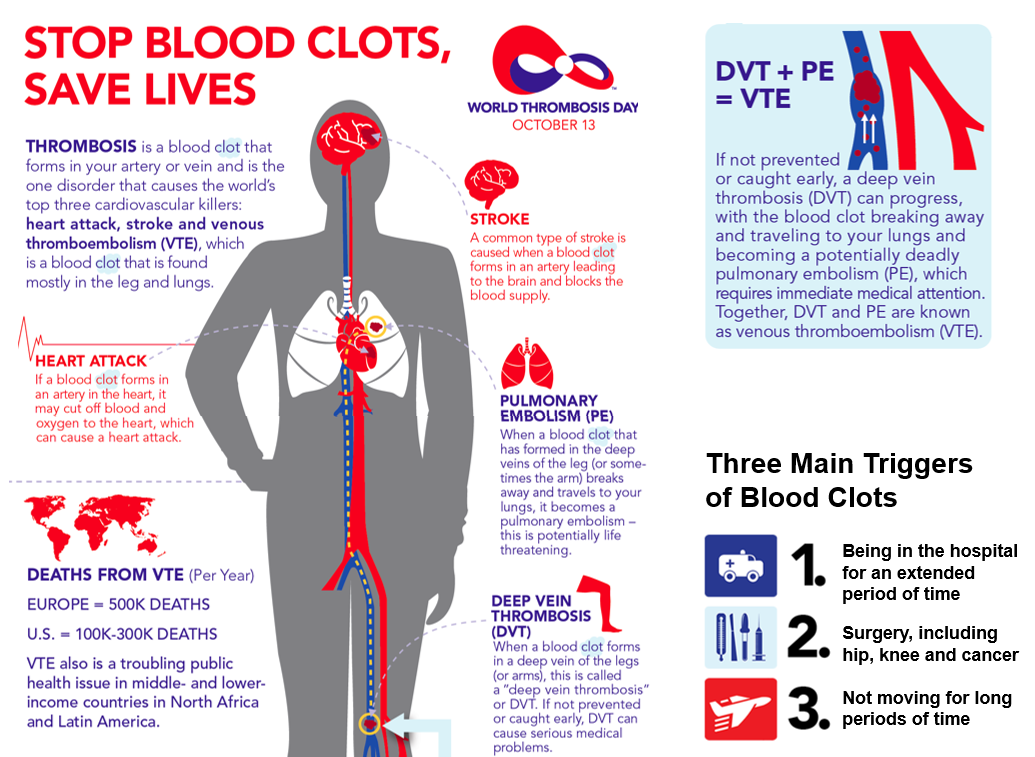
Enzymes and receptors that can act as molecular targets for drugs in the body are countless. Therefore, in addition to the main mechanism of action of the substance, there are side effects – often poorly predictable. The medicine may end up in spam before being read, and this is not the worst scenario, because it can accidentally interfere with some vital process. Creating a substance of the desired “shape” capable of binding to the desired target is easier than bringing it to this goal past the many biochemical processes competing for it.
Therefore, the creators of new drugs “cut off” on many difficult questions:
- what other substances (metabolites) will our drug turn into in the human body?
- Will they be able to leave it?
- how fast will it happen?
- What tissues and organs can it get into, and which can’t?
- Would taking the drug cause more benefit or harm to the patient overall?
We often take aspirin to bring down the temperature and relieve pain when the body has an immune response to an infection.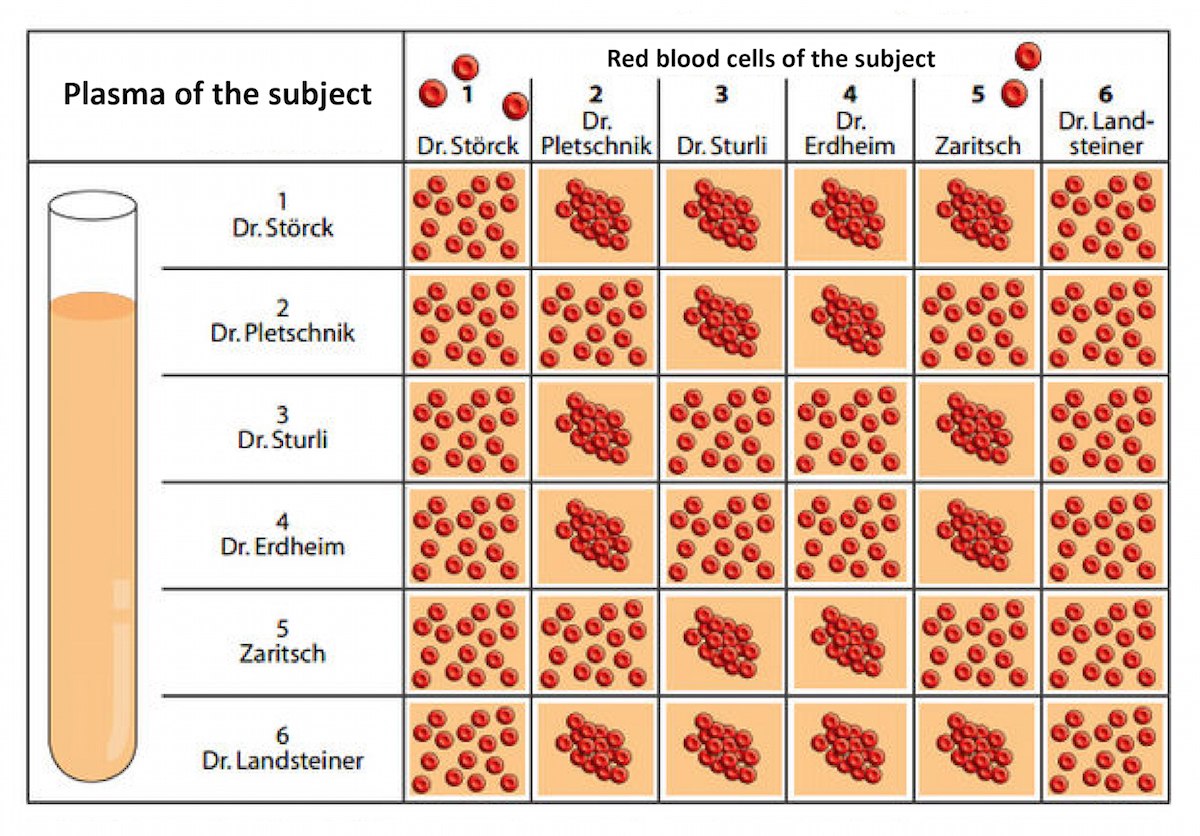 For the first time this substance was obtained by Bayer employee, chemist Felix Hoffman, in 1897 year. The discovery of its healing properties was a happy accident, because he did not yet know (and could not know) that, once in the body, it would bind to the cyclooxygenase enzyme (which plays a key role in the development of the inflammatory process). The action of aspirin was described in detail and its transformations in the body were described much later. In 1982, the Nobel Prize was awarded to the researchers John Wayne, Sune Bergström and Bengt Samuelson.
For the first time this substance was obtained by Bayer employee, chemist Felix Hoffman, in 1897 year. The discovery of its healing properties was a happy accident, because he did not yet know (and could not know) that, once in the body, it would bind to the cyclooxygenase enzyme (which plays a key role in the development of the inflammatory process). The action of aspirin was described in detail and its transformations in the body were described much later. In 1982, the Nobel Prize was awarded to the researchers John Wayne, Sune Bergström and Bengt Samuelson.
It soon became clear that the long and thorny road to new drugs only begins with the search for molecular targets and the proposed mechanism of action, and does not end with them. It is also necessary to take into account such aspects of the behavior of a substance in the body as bioavailability and pharmacokinetics, and they determine the ratio between the effectiveness of the drug and its toxicity.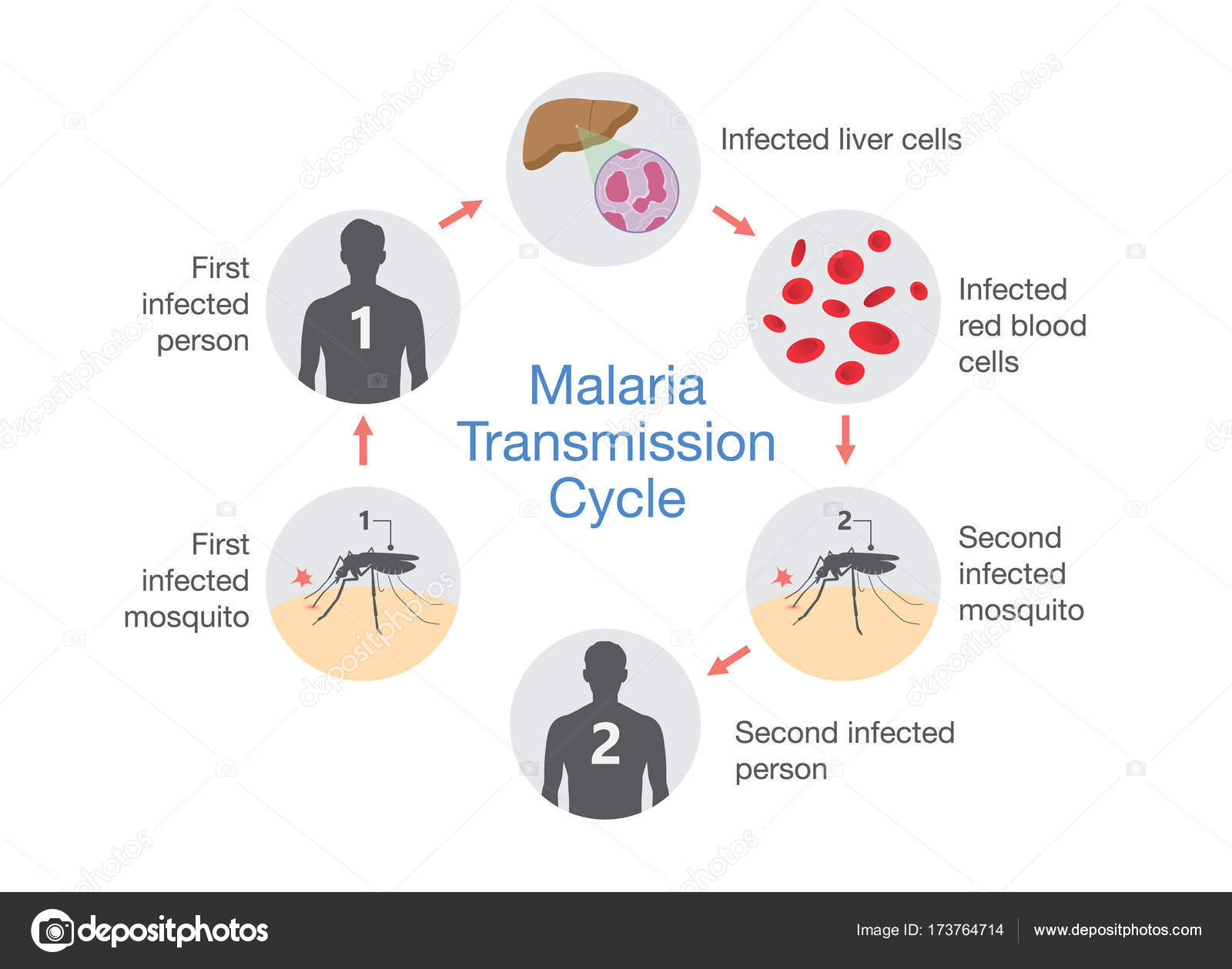
New approaches
Do you remember Lord Kelvin’s saying about “two clouds in the clear sky of classical physics”? It was from two problems that classical physics could not split (the propagation of electromagnetic waves in a vacuum and the explanation of the radiation spectrum of a heated body) that the theory of relativity and quantum mechanics were subsequently born. In drug development, there may be the same “two clouds”, two potential ways to solve problems with bioavailability and toxicity.
Firstly, today the attention of researchers is attracted by technologies of “targeted delivery” of drugs. They suggest that the drug, thanks to new types of dosage forms (based on micro- or nano-sized “containers”), gets directly into the right organs, tissues and cells. Such methods are actively developing, demonstrating individual achievements, but so far they have not managed to demonstrate great success on a wide front, and perhaps they need a fresh look from an unexpected angle.
Secondly, although it is less obvious, extracorporeal methods of treatment (based on physical and chemical processing of blood) can claim the role of such a cloud. They involve the direct extraction from the body of substances involved in the development of the disease. The history of these methods has more than one thousand years (Hippocrates, the author of the doctrine of the “vital juices” of the body, recommended getting rid of excess of one of them, blood, for example, with a runny nose or headache).
I want to dwell on the second method in more detail. Advances in drug development have pushed these unusual therapies to the periphery, but they have not completely eliminated the need for them.
The most impressive achievement of extracorporeal methods has been the industry of hemodialysis, renal replacement therapy (according to Marketsandmarkets, about $ 84 billion by 2021, financed from the budgets of both governments and insurance companies).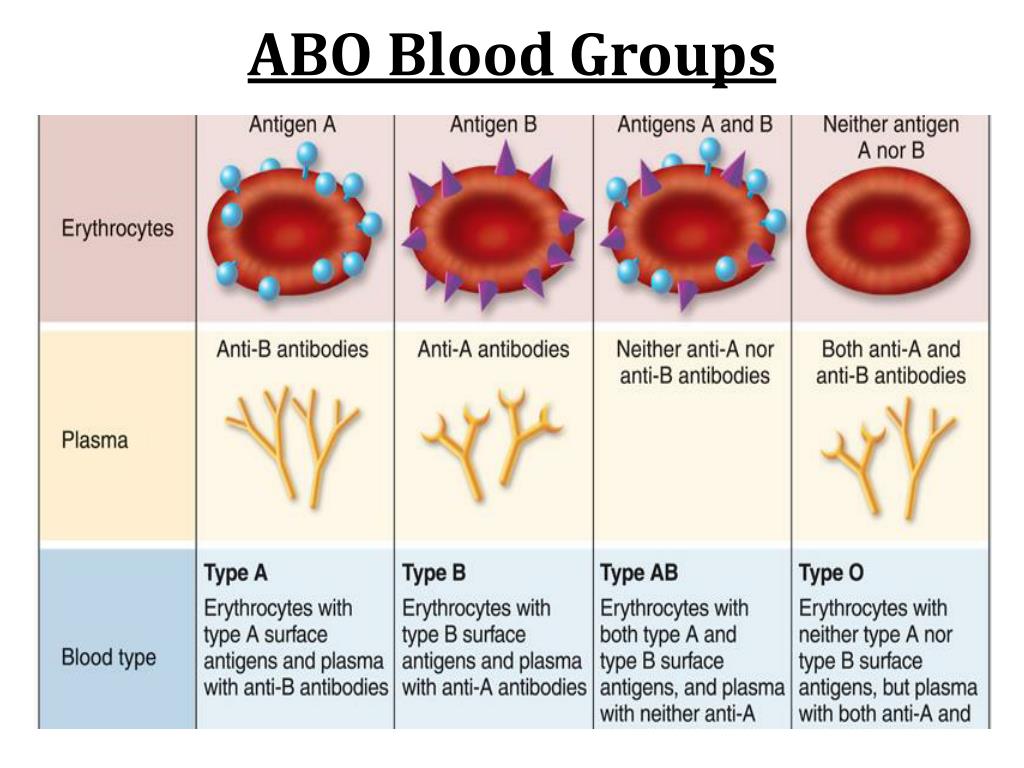 Millions of people with severe, often incurable, kidney failure are able to live full lives for many years, using “artificial kidneys” to remove accumulated urea, creatinine and other toxic substances from the blood. This breakthrough has been made possible by the creation of porous polymeric materials that are used as blood-contacting filtration membranes.
Millions of people with severe, often incurable, kidney failure are able to live full lives for many years, using “artificial kidneys” to remove accumulated urea, creatinine and other toxic substances from the blood. This breakthrough has been made possible by the creation of porous polymeric materials that are used as blood-contacting filtration membranes.
Creating materials that are highly compatible with blood has proven to be a challenge. Red blood cells, erythrocytes, are easily damaged by contact with hard surfaces. Platelets “stick” to them, forming clots. It was necessary to create a surface with which blood cells would “peacefully coexist”, as well as to choose a porous structure for it that could separate the components. Due to the physical limitations placed on the size of these pores, hemodialysis has been shown to be effective in removing relatively small molecules (such as the mentioned urea and creatinine) from the blood, as well as heavy metal ions and drugs in overdose. Therefore, today, the extracorporeal departments in hospitals, except for the most advanced ones, usually specialize in hemodialysis and emergency care for poisoning. The most advanced departments, thanks to the method, help people suffering from severe hereditary autoimmune diseases. Another direction is the removal of excess cholesterol from the blood.
Therefore, today, the extracorporeal departments in hospitals, except for the most advanced ones, usually specialize in hemodialysis and emergency care for poisoning. The most advanced departments, thanks to the method, help people suffering from severe hereditary autoimmune diseases. Another direction is the removal of excess cholesterol from the blood.
“Filters” for germs
Now we are finally ready to talk about sepsis, “blood poisoning”. I would like to put it on a par with the plague, measles or consumption – not so much a disease as the “execution of Egypt”, an ancient enemy of the human race. How can extracorporeal methods help in the treatment of sepsis, what does the talk about molecular targets and classical drug design have to do with them, and why, in my opinion, the prospects for the latter are vague here?
Sepsis has been and remains a global health problem, with one estimate of about 31. 5 million deaths each year. It seems that we have learned to deal with microbes well (the audience’s stormy response to reports of the emergence of highly resistant strains is confirmation of this), therefore, sepsis should also recede, but these expectations are still very far from reality. Even in developed countries such as the United States, mortality from severe sepsis reaches 30-50%. It remains one of the most common causes of death in hospitalized patients.
5 million deaths each year. It seems that we have learned to deal with microbes well (the audience’s stormy response to reports of the emergence of highly resistant strains is confirmation of this), therefore, sepsis should also recede, but these expectations are still very far from reality. Even in developed countries such as the United States, mortality from severe sepsis reaches 30-50%. It remains one of the most common causes of death in hospitalized patients.
We learned to understand the mechanisms of sepsis development relatively recently. Every second, the immune system “feels” our body from the inside in search of foreign substances and microorganisms. Over hundreds of thousands of years of evolution, she has learned to very confidently distinguish between the surface of the cells of our body and the cells of pathogens. By identifying them, she launches “emergency measures”. It turned out that the description of infectious agents is contained in the human genome (for this discovery in 2011, the American immunologist Bruce Butler received the Nobel Prize).
We often have a “conflict of interest” with our own immunity. Signs that he is doing his job well – fever, pain, redness, swelling, itching – are usually perceived by us as part of the disease itself. Aspirin was the first successful attempt to resolve this conflict. But in the case of sepsis, the activity of the immune system goes too far, destroying the tissues and organs of our body. Antibiotics cannot solve these problems, no matter how effective and reliable they are. The trigger for sepsis is microbial endotoxins – fragments of the outer wall of their cells, so well known to the immune system. Circulating through the body, they continue to signal danger, provoking it to fight infection at any cost.
Substances of this type have been known to scientists for more than a hundred years, during which time it was possible to study their features in detail. The researchers logically assumed that they would become the basis for the search for molecular targets. But an attempt to fight sepsis by influencing the work of the immune system, to regulate its activity with a medicine, did not lead to success.
The researchers logically assumed that they would become the basis for the search for molecular targets. But an attempt to fight sepsis by influencing the work of the immune system, to regulate its activity with a medicine, did not lead to success.
In 2001, Eli Lilly with Xigris (Zigris) was able to go through all the stages of clinical trials and received FDA approval. The most optimistic expectations were associated with Zigris, the company’s annual revenue target was $1 billion. When sales were lower than predicted amid critical reviews from doctors, the pharmaceutical company spent another $1.8 million on aggressive lobbying methods and an attempt to bring this drug into the treatment standards. ten years, after the publication of an independent study (it showed the ineffectiveness and even the danger of the drug), Zigris was discontinued. Bioavailability and toxicity once again proved to be barriers to effective drug development, confirming that strong binding to the right molecular targets in the lab does not guarantee success at the scale of the organism.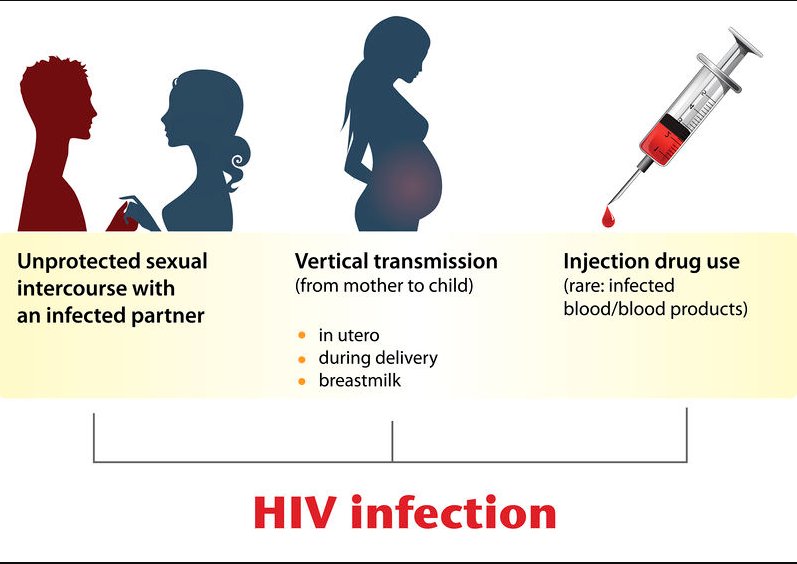
The “bright future” that targeted drug delivery technologies paint involves reducing risks by “bracketing” the most poorly predicted aspects of drug behavior in the body. It turns out that extracorporeal methods, armed with the latest achievements of medicinal chemistry, allow us to approach this goal, albeit from the opposite side.
The idea is quite simple. If bacterial endotoxins circulate in the blood of patients with sepsis, and if it is difficult to create drugs for them (the story with Zigris proves this), then perhaps it is worth trying to extract them directly? Today, organic synthesis technologies make it possible to obtain a substance that can firmly bind to almost any target, including endotoxin.
To reduce the chance of side effects, instead of injecting this substance into the body, the molecule can be attached to the surface of a polymer that is highly compatible with blood, and then placed in a “filter element”.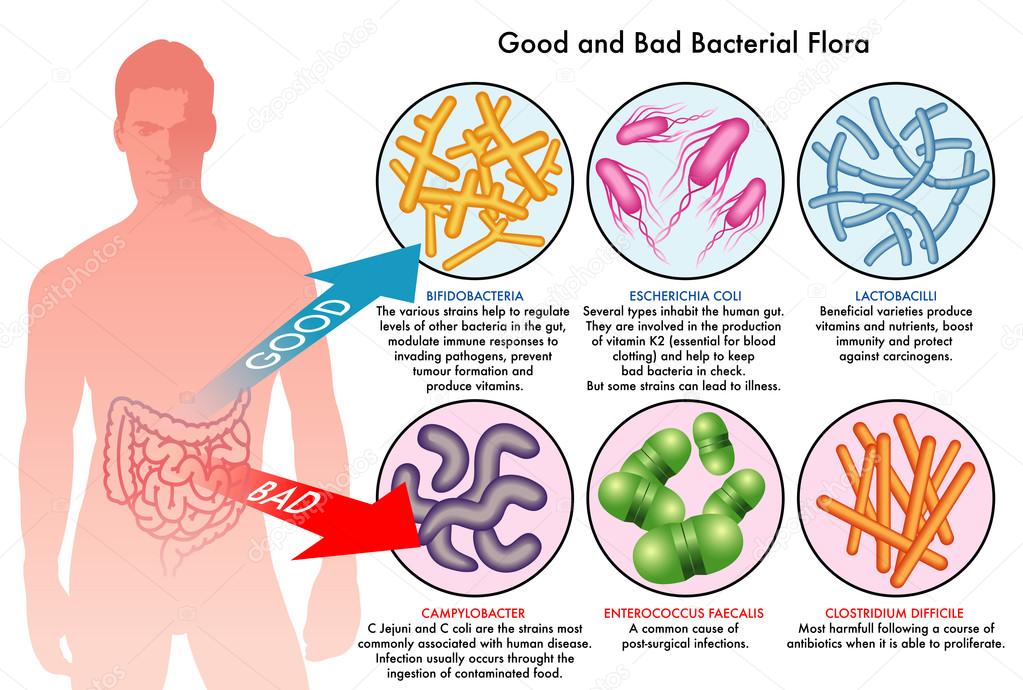 It will turn out a “trap” for endotoxins, in a professional language – a hemosorption column (the author’s company develops, manufactures and sells a similar solution – Forbes). By passing the patient’s blood through it, endotoxin substances can be removed from it, returning it to the body purified. This type of extracorporeal therapy is called selective LPS sorption (LPS is short for lipopolysaccharide, the chemical name for bacterial endotoxin).
It will turn out a “trap” for endotoxins, in a professional language – a hemosorption column (the author’s company develops, manufactures and sells a similar solution – Forbes). By passing the patient’s blood through it, endotoxin substances can be removed from it, returning it to the body purified. This type of extracorporeal therapy is called selective LPS sorption (LPS is short for lipopolysaccharide, the chemical name for bacterial endotoxin).
However, in the short years that LPS-sorption has been used (dozens of clinical studies have already been carried out, their results have been published in highly-rated peer-reviewed scientific journals (as an example, three publications – 1,2,3), it has become clear: the method cannot be considered ” silver bullet.” As it turned out, the effectiveness of the method was not the same for different patients.
It turned out that the chances of patients to survive increase significantly if LPS sorption is carried out in the first hours of developing septic complications. The likelihood of postoperative complications can be reduced if carried out procedure directly on the operating table, but modern biocompatible polymers used as an absorbing material made it possible to reduce the number of undesirable side reactions to almost zero.0005
The likelihood of postoperative complications can be reduced if carried out procedure directly on the operating table, but modern biocompatible polymers used as an absorbing material made it possible to reduce the number of undesirable side reactions to almost zero.0005
In a word, the sooner we apply the method to fight sepsis, the greater the effect will be. However, so far these considerations run counter to the usual ideas about the role of extracorporeal detoxification methods, which are often remembered at the last moment, “for good luck”, when nothing else helps.
At the end of 2016, a Phase 3 clinical trial of a solution from Japan called Toraymyxin was completed in the US. The researchers are awaiting publication of the results. At the same time, tests are underway on a new device for extracorporeal therapy of sepsis based on the membrane principle of separation (the patient’s blood is allowed through a membrane filter). This method can easily be integrated into the excellent hemodialysis (renal replacement therapy) industry, so it may be cheaper to implement. And in January 2017, the world’s leading manufacturer of solutions for extracorporeal therapy, Fresenius Medical Care, signed an agreement with the American manufacturer of hemosorption columns CytoSorbents, arranged according to a different principle, not capable of selectively absorbing bacterial endotoxins, but also used in the treatment of sepsis and a similar condition, the so-called “systemic inflammatory response”. Around the world, tens of thousands of patients have already been able to overcome sepsis with the help of such unusual treatments, and their number is growing every year.
This method can easily be integrated into the excellent hemodialysis (renal replacement therapy) industry, so it may be cheaper to implement. And in January 2017, the world’s leading manufacturer of solutions for extracorporeal therapy, Fresenius Medical Care, signed an agreement with the American manufacturer of hemosorption columns CytoSorbents, arranged according to a different principle, not capable of selectively absorbing bacterial endotoxins, but also used in the treatment of sepsis and a similar condition, the so-called “systemic inflammatory response”. Around the world, tens of thousands of patients have already been able to overcome sepsis with the help of such unusual treatments, and their number is growing every year.
Every year, on average, 50 out of 100,000 people are at risk of being hospitalized with symptoms of sepsis. For Russia, this gives a minimum of 60,000 patients per year, for Europe – 300,000, for Asia – 1. 8 million people. According to a conservative estimate, 10-20% of this number of patients have medical indications for LPS sorption. If we assume that one or two hemosorption columns are consumed per patient, and its price is in the range of $1000-3000, then the total volume of the Eurasian market reaches several billion dollars.
8 million people. According to a conservative estimate, 10-20% of this number of patients have medical indications for LPS sorption. If we assume that one or two hemosorption columns are consumed per patient, and its price is in the range of $1000-3000, then the total volume of the Eurasian market reaches several billion dollars.
Expanding indications could be a key driver of growth, and many of the ongoing clinical trials are targeting this.
The history of the use of extracorporeal methods in medicine has come a long way from “bleeding” to selective LPS sorption. Procedures with insufficiently proven effectiveness before our eyes are turning into effective techniques based on the most modern ideas about the molecular mechanisms responsible for the development of critical conditions. Advanced methods for producing polymeric materials make it possible to realize these ideas. They find applications to effectively combat such a serious disease as sepsis.
They find applications to effectively combat such a serious disease as sepsis.
What’s next? With the growth of access to high-tech medicine, every inhabitant of the Earth is more likely to encounter complications of surgical interventions, and highly resistant pathogens of nosocomial infections seem to become inevitable. All this additionally emphasizes the importance of finding new methods in the fight against complications of infectious diseases that will reduce the need for the use of antimicrobials, and if not cancel the coming “antibiotic era decline”, then at least delay its onset. Therefore, today a lot of expectations are associated with the further development of LPS sorption technologies and other related methods, which have already saved many lives.
Through a scratch: deaths from blood poisoning have decreased in Russia | Articles
Russian doctors managed to reduce mortality from sepsis to 29%. Previously, almost half of hospitalized severe patients died from blood poisoning – 45%, reported at the forum for the World Sepsis Day, held in St. Petersburg. Izvestia found out what blood poisoning is, whether it can arise from a scratch or a squeezed out pimple, and what are the symptoms and prognosis of a dangerous disease.
Previously, almost half of hospitalized severe patients died from blood poisoning – 45%, reported at the forum for the World Sepsis Day, held in St. Petersburg. Izvestia found out what blood poisoning is, whether it can arise from a scratch or a squeezed out pimple, and what are the symptoms and prognosis of a dangerous disease.
Medical successes
The septic forum was timed to coincide with the anniversary of the country’s only Severe Sepsis Treatment Center operating on the basis of the Janelidze Research Institute for Emergency Medicine. The head physician of the center, Professor Sergei Shlyapnikov, said that more than 600 seriously ill patients are treated there every year.
The staff of the center also explains to doctors of other specialties how to properly treat sepsis. They were able to prove that about 95% of infections come from a weakened patient’s body and only 5% of patients receive it in a hospital.
Photo: TASS/Petr Kovalev
“The treatment of purulent infections has become a separate branch. We work with the staff, train them and say that there is no need to be afraid to transfer difficult patients to our center. But the patients themselves should know that blood poisoning is not a joke. The area around the wound is inflamed, reddened, the temperature rises – immediately see a doctor! the professor concluded.
We work with the staff, train them and say that there is no need to be afraid to transfer difficult patients to our center. But the patients themselves should know that blood poisoning is not a joke. The area around the wound is inflamed, reddened, the temperature rises – immediately see a doctor! the professor concluded.
Every year, 6 to 11 million people die from sepsis worldwide. The World Health Organization (WHO) has declared it the main health threat of the current century. The disease remains one of the most terrible complications in almost all areas of medicine, doctors admit.
What is sepsis
Sepsis is a purulent-septic infection of the blood. This condition is extremely life-threatening – it causes damage to internal organs and the whole body, Nadezhda Fomina, an infectious disease doctor at the Federal Scientific and Practical Center of the Federal Medical and Biological Agency of Russia, explains to Izvestia.
According to her, the causes of sepsis can be any viruses, bacteria and fungi. Infection can be triggered by immunodeficiency in humans or caused from outside.
Infection can be triggered by immunodeficiency in humans or caused from outside.
Photo: Global Look Press/dpa/Hendrik Schmidt
– Sepsis can develop in the presence of otitis media, severe sore throat, meningococcal infection, or when the skin has wounds, burns, or ulcers. Microbes can get into the bloodstream even through an ordinary scratch, so when treating any infection, it is important to pay great attention to preventive measures and follow antiseptic rules, the doctor says.
According to the WHO, more than 30 million people develop blood poisoning each year, including 3 million children. One in ten deaths due to pregnancy and childbirth is due to maternal sepsis. This problem is most prevalent in low- and middle-income countries.
In the case of , sepsis can cause septic shock, multiple organ failure, and death if the person is not recognized early and treated. To make matters worse, such infections are often resistant to antibiotics.
At risk for blood poisoning are children under one year of age who do not yet have a sufficiently developed immune system, the elderly, and those who have reduced immunity due to drug suppression (for example, people with autoimmune diseases receiving chemotherapy) or due to chronic diseases, especially HIV-infected in the stage of AIDS.
Symptoms of sepsis
According to Nadezhda Fomina, disinfection of damaged skin areas reduces the risk of infection. If you get hurt – you need to immediately treat the skin with an antiseptic.
— Rapid diagnosis is important in the management of sepsis . If the resulting wound indicates signs of inflammation (pain, swelling or pus appeared at the site of injury), you should immediately seek medical help , – says the interlocutor of Izvestia.
Blood poisoning is also indicated by symptoms of intoxication: loss of appetite, weakness, chills, low blood pressure. Alarming signs include a temperature of 38 degrees, which may be accompanied by tachycardia and increased sweating, tachypnea (rapid shallow breathing, more than 20 per minute) and an increased or, conversely, low level of leukocytes in the blood.:max_bytes(150000):strip_icc()/advice-about-bright-red-blood-in-stool-796937-v3-004a17fa66384362918ed65f63233acd.png)
Photo: Global Look Press/IMAGO/Bilderbox
— A picture of sepsis might look something like this: A patient who has recently had an infectious disease observes an increase in temperature for a long time (these can be both high rates – 39 degrees and above, as well as small deviations from the norm, like 37.5), shortness of breath, confusion (poor reaction to referring to him), may become delusional or be in a state of lethargy , – explains the expert doctor, oncologist of the medical online service “SberHealth” Suna Isakova.
Diagnosis of infection consists in identifying pathogenic microorganisms in the blood, as well as determining the level of procalcitonin in the blood. Additionally, ultrasound or computed tomography may be prescribed.
— The doctor decides on the choice of treatment method depending on the lesion and the patient’s condition – it can be antibiotic therapy or surgical intervention. Complications from blood poisoning can be very serious, since inflammation develops quickly and can lead to the failure of vital organs , – says infectious disease specialist Nadezhda Fomina.
Prevention and treatment
The main difficulties in the treatment of sepsis are associated with resistance to antibiotics and delayed initiation of therapy. It can be delayed in time due to the complexity of diagnosis and the non-specificity of symptoms.
— Sepsis can be caused by a wide range of pathogens, so its early symptoms are easy to miss. Laboratory tests can definitely tell about its development,” says Olga Bakshutova, head of the digital medicine department at VSK Insurance House. — After establishing the diagnosis, it is important to choose an antibiotic. And this is not easy: many pathogens acquire resistance to antibiotics, adapt to their effects and are not amenable to treatment with these drugs.
At the same time, the patient himself is in a weakened state, and in people with immunodeficiency conditions, the infection can take a fulminant course and develop in a short time.
Photo: Izvestiya/Pavel Volkov
That is why doctors recommend focusing efforts on the prevention of blood poisoning: in everyday life, this means maintaining cleanliness, cleaning hands and damaged skin, timely vaccination and contacting a doctor.